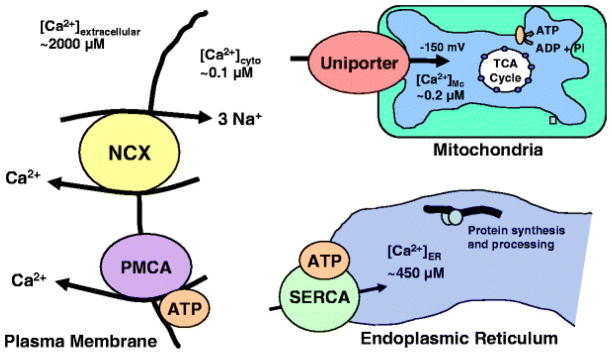Fig. 7.
Model depicting the major processes that control intracellular calcium homeostasis. Cytosolic calcium can be taken up into endoplasmic reticulum by the sarcoplasmic–endoplasmic reticulum ATPase (SERCA) or into mitochondria by the uniporter. The endoplasmic reticulum normally maintains a high internal level of calcium and probably does not have a primary role in the clearance of cytosolic calcium. The mitochondrial uniporter exhibits an exponential increase in transport when the cytosolic calcium concentration exceeds ~1 μM. Most of the routine control of intracellular calcium is probably handled by the plasma membrane calcium ATPase (PMCA) and the sodium–calcium exchanger (NCX). PMCA is a high-affinity, low-capacity pump that uses ATP to drive the export of calcium from the cell. NCX is a low-affinity, high-capacity exchanger that uses the Na+ gradient across the plasma membrane to exchange 3 Na+ for 1 Ca2+. Recent studies designed to isolate the function of each process have suggested that loss of NCX function may be responsible for the gradual destabilization of intracellular calcium in neurons exposed to HIV, FIV, or associated toxins.

